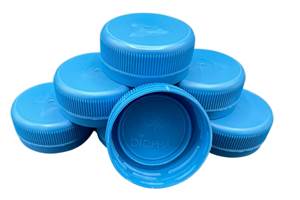Processor Strategies - Cashmere Molding Inc.: ‘Compete Globally, Produce Locally’
What kind of a company increases sales by an average of 60% annually, including a 10% gain last year, in the depth of the Great Recession?
What kind of a company increases sales by an average of 60% annually, including a 10% gain last year, in the depth of the Great Recession? What kind of plastic molder increases its injection machine count by 70% and its employee head count by 44% in the midst of that recession, while it’s beset on all sides by competition from China, Mexico, Europe, and elsewhere? What kind of profitable custom molder has its piece prices compared annually with molders around the globe and always keeps the job?
The answer is a company that believes, “You have to give the customer excellent quality and a competitive price.” And just to make sure, add top-class service to the package. It’s a company dedicated to automation, innovation, and “going where others haven’t” in technology and materials. A company that knows it needs the right human and technical resources and treats its employees as well as its customers, even in a recession. A company that knows “just waving the flag won’t keep manufacturing jobs in the U.S. We have to outsmart and outwork the competition.”
Cashmere Molding in Woodinville, Wash. (cashmeremolding.com) is that kind of company. Greg Herlin, co-owner, president, and CEO, started the firm in 1991 with partner Mike Gadwell, Cashmere’s director of engineering. At the time, they were both 24, recent graduates of Western Washington University in Bellingham, where Herlin studied business and Gadwell earned a degree in plastics engineering. They leased a ramshackle 1500-sq-ft plant with a crumbling floor and three old molding presses and just the two of them to do everything. Their first big break was when a fledgling local company, Sonicare, hired them to mold electric toothbrush parts. Sonicare was bought by Royal Philips Electronics in 2000, but Philips remained a loyal customer.
Today, Cashmere does just under $10 million annually. Its two buildings total 20,000 sq ft, with 17 presses from 40 to 1000 tons, and 65 people, including four engineers (two of them plastics engineers). Operating 24/5, Cashmere molds close to 1.5 million parts a month in everything from polyethylene to PEEK and PLA biopolymer. As a full-service molder, it offers design assistance, Moldflow analysis, prototyping, in-mold labeling, pad and screen printing, laser marking, vacuum metalizing (unusual for a custom molder), and assembly—including ultrasonic welding. Cashmere also has a Class 10,000 clean room and ISO 9001-2008 quality certification. “We’re still a humble facility,” Herlin says, “but we’re clean and well organized, and we learned to be fast and efficient, with parts-per-million defect rates, so we can be profitable in a global market.”
PULLING JOBS BACK FROM CHINA
Philips annually put the parts Cashmere molded up for bids by molders around the world, but Cashmere never lost a Philips job. And in the last 18 months, Cashmere convinced seven other OEMs, who were 100% outsourced to China, to bring multi-tool jobs back to the U.S.
Cashmere invests aggressively in technology. Most of its machines are brand new, with energy-efficient drives. “We also use hot sprues whenever possible to reduce scrap,” says Herlin, “and we run automatically whenever possible—using full-servo robots—so one operator can handle three or four presses.”
Though Cashmere builds a few of its own tools, it saves by ordering most of them from China—but it exercises tight control over each mold build so it doesn’t have to spend money fixing the tools after they arrive.
Cashmere is also innovative in ways other molders rarely attempt. Cashmere has formulated two dozen custom materials for customers by blending batches of different pellets and then mixing the materials in the molding machine.
The key weapons in Cashmere’s arsenal are two Engel 300-ton presses equipped for two-shot molding. “We have a unique approach to overmolding,” says Herlin. “We take two standard molds that formerly ran in two presses and we put them in one press with robot transfer of the part between the molds. We thereby eliminate, on average, 70% of the labor and cycle time and cut the customer’s cost by 40% or better. Quality is improved too, because there’s a lot better bonding when the overmolding is done hot.”
Related Content
PHA Compound Molded into “World’s First” Biodegradable Bottle Closures
Beyond Plastic and partners have created a certified biodegradable PHA compound that can be injection molded into 38-mm closures in a sub 6-second cycle from a multicavity hot runner tool.
Read MoreMoving Beyond the Relative Viscosity Curve — Determining Optimum Plastic Flow Rates: Part 1
Should injection molders consider using a range of plastic flow rates, versus the selection of one plastic flow rate from the relative viscosity curve?
Read MoreWhat to Look for in High-Speed Automation for Pipette Production
Automation is a must-have for molders of pipettes. Make sure your supplier provides assurances of throughput and output, manpower utilization, floor space consumption and payback period.
Read MoreRevisiting the '5 M's' of Molding
All injection molding ultimately comes down to the “Man, Mold, Machine, Material and Method.” But those key aspects can be viewed differently if you’re auditing mold changes before startup or troubleshooting changes for an already validated process.
Read MoreRead Next
People 4.0 – How to Get Buy-In from Your Staff for Industry 4.0 Systems
Implementing a production monitoring system as the foundation of a ‘smart factory’ is about integrating people with new technology as much as it is about integrating machines and computers. Here are tips from a company that has gone through the process.
Read MoreBeyond Prototypes: 8 Ways the Plastics Industry Is Using 3D Printing
Plastics processors are finding applications for 3D printing around the plant and across the supply chain. Here are 8 examples to look for at NPE2024.
Read More





















